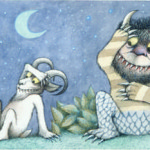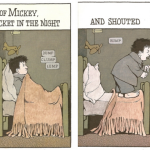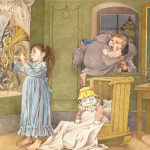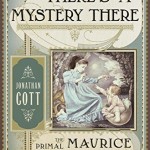“Fantasy,” Maurice often declared, “is the best means children have for taming wild things.”
Where the Wild Things Are is the first exposure many people have to fantasy. The author and artist Maurice Sendak created this beloved children’s book, along with writing and illustrating twenty-one other works, creating the illustrations for almost a hundred more, and even providing the set design for several ballets and operas. Sendak is universally regarded as a genius…and yet his work can be so strange that it’s hard to describe exactly why people love it as much as they do.
Rolling Stone editor Jonathan Cott has compiled several years of his interviews with Sendak into the upcoming book, There’s a Mystery There – The Primal Vision of Maurice Sendak, going into loving detail about Sendak’s childhood, his passions, and his influences. Cott also spends several chapters of interviewing prominent fans and friends of Sendak to take a deeper look into what the artist was trying to say, and what might have shaped a child of a Polish immigrant into one of the most famous artists of the century.
Several of Sendak’s books are highlighted here, but the primary focus is Outside Over There, the third book in a trilogy that started with Where the Wild Things Are. Sendak considered Outside Over There his masterpiece, and Cott uses it as a lens through which to see inside Maurice’s entire outlook on his life.
No nuance is too subtle to comment on, and in fact when I found out that Cott also interviewed four experts about Maurice (a psychoanalyst, a Jungian analyst, an art historian, and a playwright) I thought for sure that this was maybe going to get a little too deep, I imagined several people combing through books like Higglety Pigglety Pop! Or, There Must Be More To Life with all the passion of diehard fans, picking out details like the fall of a piece of drapery or the tilt of someone’s head, and assigning all kinds of meaning that the author might not have planned…
…except it becomes extremely clear in Cott’s interviews with Maurice Sendak that there’s hidden meaning in each part of any of his drawings and paintings. By design. Sendak was endlessly fascinated by the workings of his own mind. He took therapy for years to try to work through his feelings about his childhood (conflicted, sometimes scary, a time of imagination and emotional upheaval, with passions that adults are taught to forget. Basically like a lot of people’s childhoods), and he put everything he learned in his artwork, weaving in his various obsessions, like his beloved dog Jennie, his love of Mozart, his inability to let the whole story of the Lindburgh kidnapping alone, and how much he adored Manhattan.
There’s a Mystery There is a surprisingly easy read. The details of Maurice’s family and childhood are fascinating, the various experts point out connections to Greek mythology, epic poetry, and a Sarah McLachlan song, and Sendak himself comes across as one of the loveliest, oddest people I’ve ever read about. The book is illustrated with many of Sendak’s works, so midway through each discussion you can get plenty of those “Whoa, I never even considered that,” moments (I love that sort of thing.) And it’s made very clear throughout that Sendak didn’t consider himself a creator of children’s books; he was a creator of books that children liked, which in many ways translated to adults liking them as well.
“I live inside the picture book; that’s where I fight my battles, and where I hope to win my wars.”
Sendak spent almost five years on Outside Over There, which is amazing considering that it’s really one of the least known of his books. Certainly it’s one that I think I’ve looked at maybe once in a used book store, compared to the dozens of times I read through Higglety Piggelty Pop! (which really is a surprisingly unsettling book.) I may have to find another copy of it now that I’ve read about all of the intricate details that are on each page.



